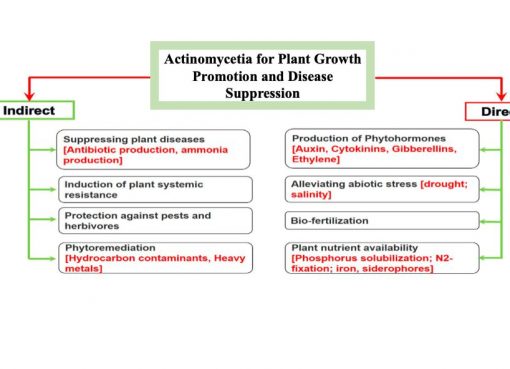Stomach cancer is the second-most common cancer among men and third-most among women in Asia and worldwide. A high incidence of gastric cancer has been reported from Southeast Asia, mainly from Japan, China and South Korea. The incidence of cancer in India is 70 – 90 per 100,000 population and cancer prevalence is established to be around 2,500,000 (2.5 million) with over 800,000 new cases and 5, 50,000 deaths occurring each year. More than 70% of the cases are present in advanced stage accounting for poor survival and high mortality. The age-adjusted rate [AAR] of gastric cancer among urban registries in India is [3.0–13.2] compared to the worldwide AAR [4.1–95.5]. Worldwide and more so in the developed world, there has been a decline in the incidence of gastric cancer and this has been attributed to improved food hygiene, sanitation, and food preservation techniques. There is an opinion that adequate intake of certain vitamins decreases the probability of contracting stomach cancer. However, this declining trend has not been seen in certain parts of India. Differences in some dietary pattern and use of tobacco and alcohol have been considered as potential risk factors.
North-Eastern India is known as one of the most diverse regions in Asia ethnically and culturally and inhabits more than 166 tribes. The year 2006-2008 report of National Cancer Registry Program, ICMR reveals that in India the highest incidence of gastric cancer is in Aizawl, Mizoram which is far more than the other districts of the Mizoram state, the report says the state of Sikkim ranks second in terms of the gastric cancer incidences (NCRP-ICMR, 2007 and 2010). Gripping with its deadly hand an average of three people a day, the dreaded cancer is silently stalking this tiny state of Mizoram. No wonder Mizoram has been dubbed the ‘Cancer capital of India’. According to the National Cancer Registry Programme (NCRP) and Mizoram Population Based Cancer Registry (PBCR) report, at least 5,888 new cases of cancer were detected in the state during the last five years. Of these, 3,137 people, including 1,290 women died. Mizoram has a very high incidence of stomach, oesophagus, lung, and cervix cancer. According to PBCR 2006-2008, there are high incidence of stomach, lung and esophagus cancer among males and females are effected with breast, cervix uteri, stomach and lung cancer (http://www.ncrpindia.org/ Annual_Reports.aspx).
In Mizoram, a very high tobacco smoking rate is found. A peculiar habit of using “tuibur” [tobacco smoke–infused water] has also been observed in Mizoram. The habit of chewing betel quid, containing fresh betel nut, slaked lime wrapped in betel leaf is also consumed in Mizoram. “Khaini” is a locally used tobacco product that contains powdered leaf blended and mixed with fine lime paste is also consumed extensively and many scientific reports say that this kind of tobacco use including smoking is highly associated with stomach cancer.
Cancer is a multifactorial disorder and most of the cancer cases seem to be a result of sporadic mutations occurring due to spontaneous genetic events, environmental events or interaction between genetic and environmental factors. Very less research has been done on the dietary habits of the Mizo people, Stomach cancer in Mizoram has been shown to have a positive association with their food habits i.e. consumption of smoked, dried and salted fish and meat. Gastric cancer is the second most common cancer in the world. A focused investigation till date has not been done on genetic susceptibility Mizo population with reference molecular genetics and cancer biology.
Our group discovered some novel mutations and polymorphisms in mitochondrial genome and TP53 (Tumor Protein), CDH1 (E-Cadherin) genes associated with gastric cancer in Mizo population. To our knowledge, our study is a novel finding in terms of the possible role of mtDNA COXI (Cytochrome C-Oxidase Subunit) and D-loop (Control region) mutations in gastric carcinogenesis. In summary, we have identified novel mutations in mitochondrial control region and cytochrome c oxidase subunit I genes (which is frequently less expressed) in gastric tumor cells. Mitochondrial microsatellite instability is also a major factor for progression of gastric tumor and it was significantly associated with H. pylori infection with cagA positive or negative and smoked meat consumption in Mizo population. All the tumor samples containing COXI 6395C>G heterozygous mutation are producing high level of ROS. The COXI mutations significantly altered the conserved amino acids, and they included both new heteroplasmic somatic and recurrent homoplasmic germ-line mutations. This might be major cause of low activity of complex IV enzymes. Due to the COI (A)7 tract alteration, the complex III and IV enzyme activities might be altered and reflects the mitochondrial pathogenicity in gastric cancer. Mitochondrial gene alterations may attribute for gastric cancer risk in Mizoram, Northeast Indian population. The analysis of mtMSI and D-loop alteration might help to identify patients at high risk for gastric cancer diagnosis. The mutations of D-loop and COXI takes part in the carcinogenesis and progression of gastric cancer through the effect of increased ROS and altering the mitochondrial ETC complex enzyme activity and cell cycle. The mutations in COXI markedly decreased overall immunostaining of cytochrome c oxidase subunit I may prove to be reliable biomarkers of gastric cancer risk, because they occur at elevated frequency in the stomach mucosa of patients with, and at high risk for cancer. We have also demonstrated that mtMSI is an early and important event in the progression of gastric carcinogenesis, especially in intestinal-type gastric cancer. H. pylori infection contributes to mtMSI in gastric cancer development. Our results support a role for mtMSI in different mechanisms of gastric carcinogenesis. Because the majority of patients with H. pylori infection will not progress to cancer and only a subset of these patients harbor mtMSI, it is conceivable that patients with H. pylori infection displaying mtMSI are at greater risk of developing gastric cancer than those without instability.
In our study, we focused on the participation of genetic alterations of TP53 gene, such as mutational inactivation, SNPs, and expression of mutant form of p53 protein in the esophageal and gastric carcinogenesis. This study emphasizes the fundamental role of molecular alterations of “the guardian of the genome” in these neoplasms, with serious consequences for the deregulation of the cell cycle, loss of pro-apoptotic function. Considering the involvement of TP53 alterations both in early stages as in tumor progression, it is an important biomarker for the diagnosis, tumor progression, and poor prognosis associated with lymph nodes metastasis. Gastric carcinogenesis may be related to the existence of chronic H. pylori infection, which leads to imbalance of proliferation and apoptosis in the early stage, and furthermore mutation of p53-tumor-suppressor system and finally gastric cancer tumorigenesis.
Taking into consideration our findings, it appears that germ-line CDH1 cannot independently explain diffuse type gastric cancer and that other genetic alteration are involved in this disease. In fact, somatic mutations, enhanced by gene silencing, underlie the CDH-1 down-regulation in eight of seventeen patients. Remarkably, in four cases CDH1 was down-regulated in cancer specimens, without any evidence of either CDH1 mutations. Therefore, other genetic unknown alterations able to induce CDH1 down-regulation could be present in the gastric cancer patients. This finding is well in accordance with recent data indicating a mixed prevalence of hereditary and sporadic CDH1 genetic alterations in gastric cancer and prompts further research in this field to isolate unknown genes involved in CDH1 down-regulation.
Our data showed that GSTM1, GSTT1 and GSTP1 polymorphism were found to be significantly associated with the demographic factors and GC risk in Mizo population. It is very devious to consider the weight of each demographic factor concerned in its pathogenesis separately, particularly the contribution of genetic factors. Presence of H. pylori with CagA genotype showed significant individual effect with GSTT1 polymorphisms as well as strong synergistic effect among each other in gastric cancer risk and validated the results of gene–environment interaction. Significant negative expression of GSTP1 for gastric cancer samples with presence of G/G, A/G (rs1695) and T/T genotype (rs1138272) might not protect the cell from carcinogens or other xenobiotics.
Hence, these molecular pathology mechanisms can be applied in routine diagnostic procedures, classification systems, disease monitoring. Further, prospective studies with larger sample size analyzing gene-environment relations in different geographic areas and ethnic groups are needed to assess the significance of each factor for gastric cancer.
Authors : Souvik Ghatak1, Jeremy L Pautu2, John Zohmingthanga3, N. Senthil Kumar1 1Department of Biotechnology, Mizoram University, Aizawl -796004, Mizoram, India 2Mizoram State Cancer Institute, Zemabawk, Aizawl -796017, Mizoram, India 3Department of Pathology, Civil Hospital, Aizawl -796001, Mizoram, India




